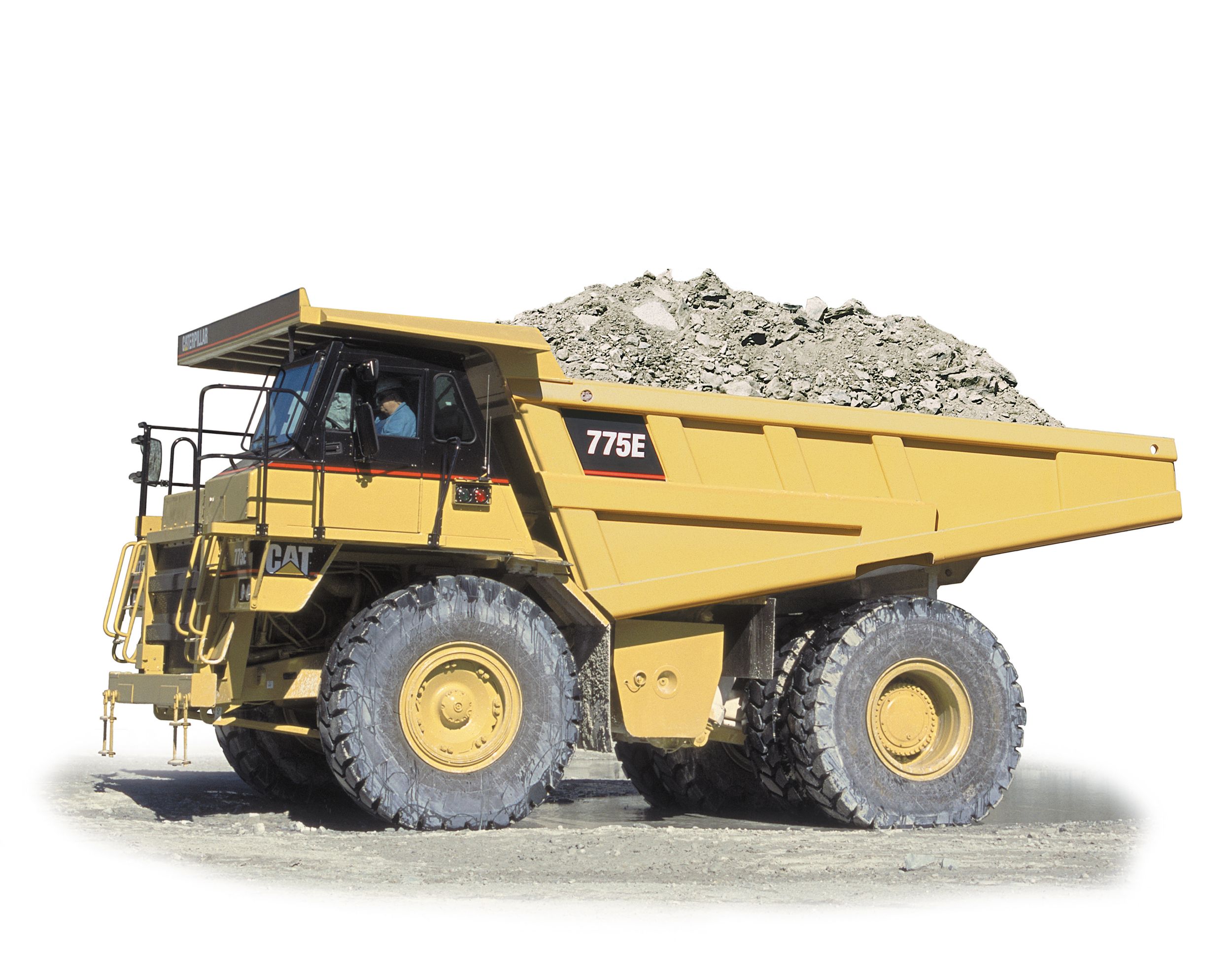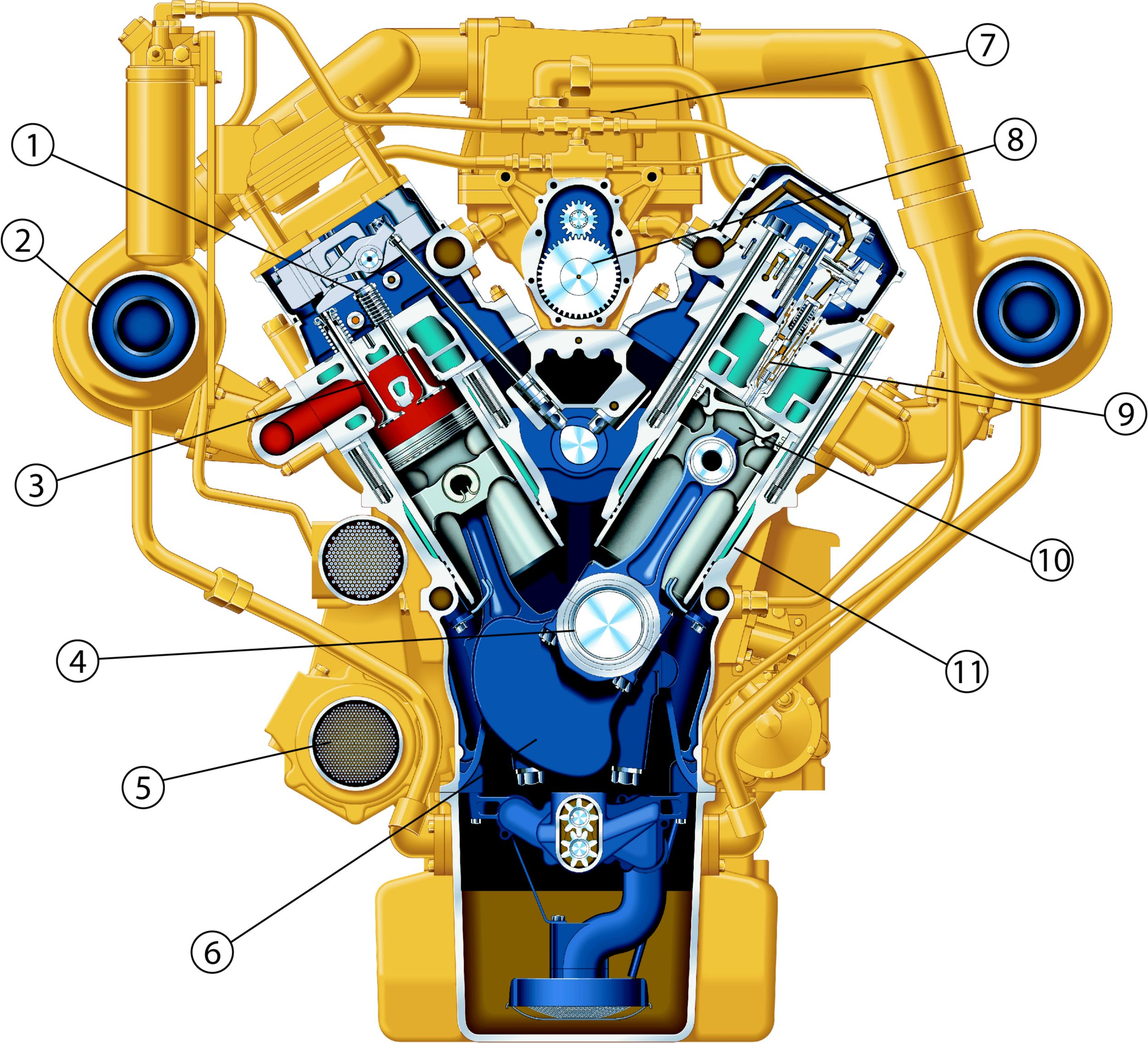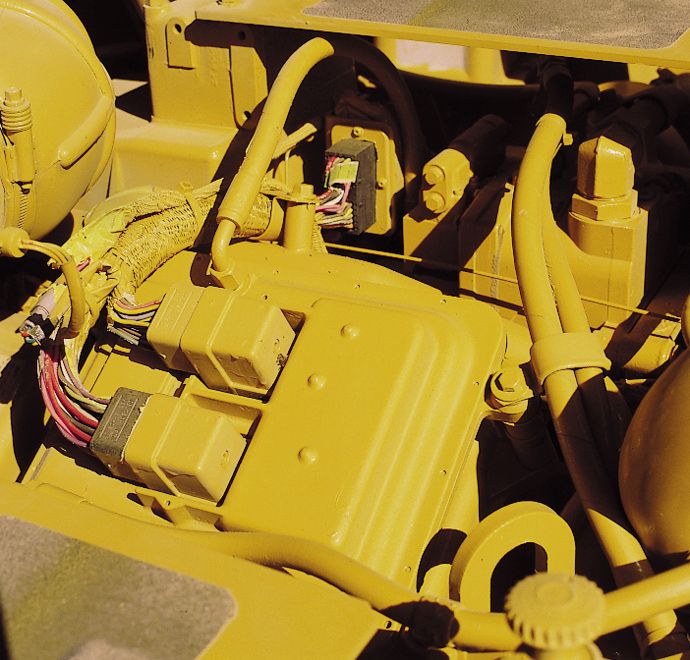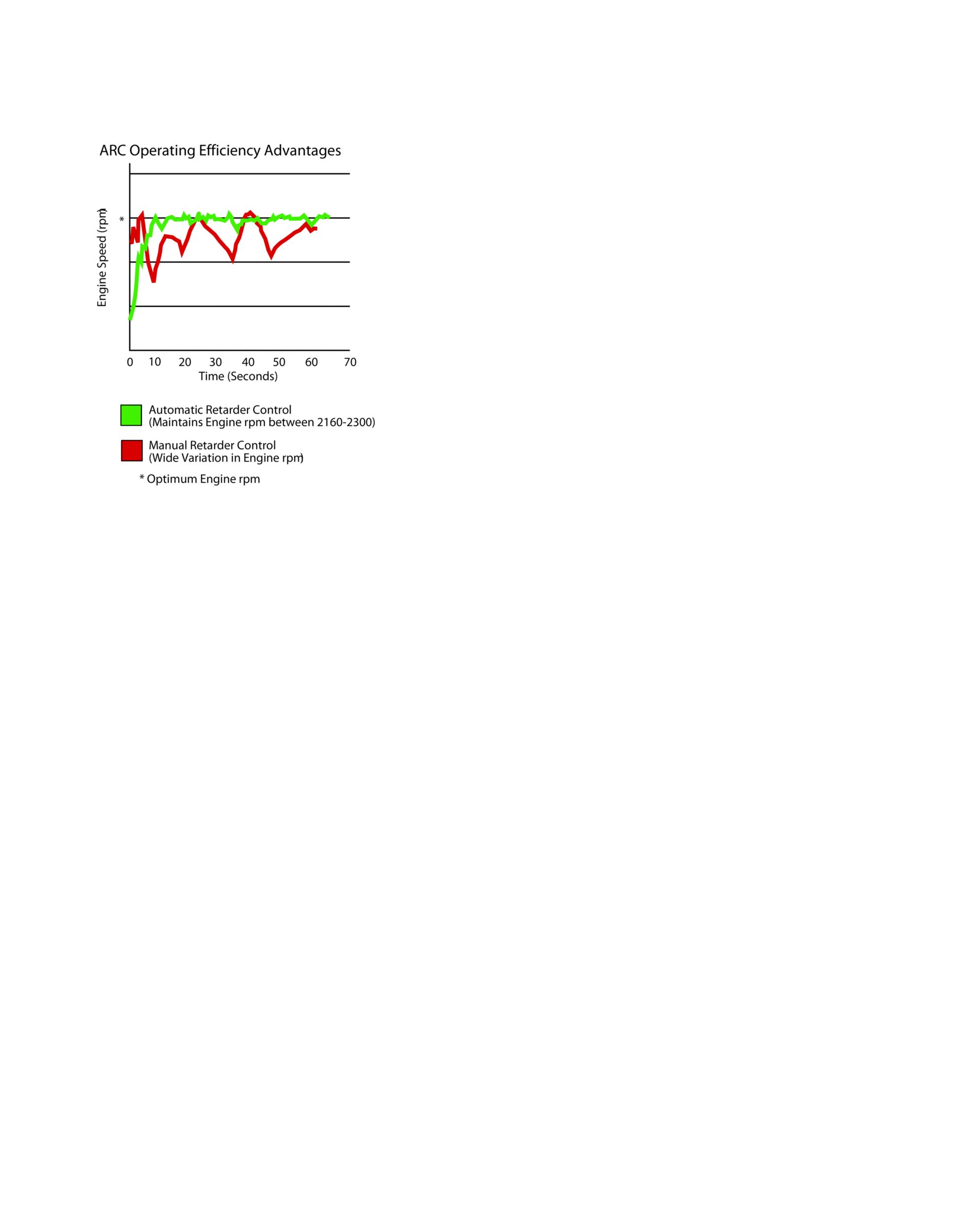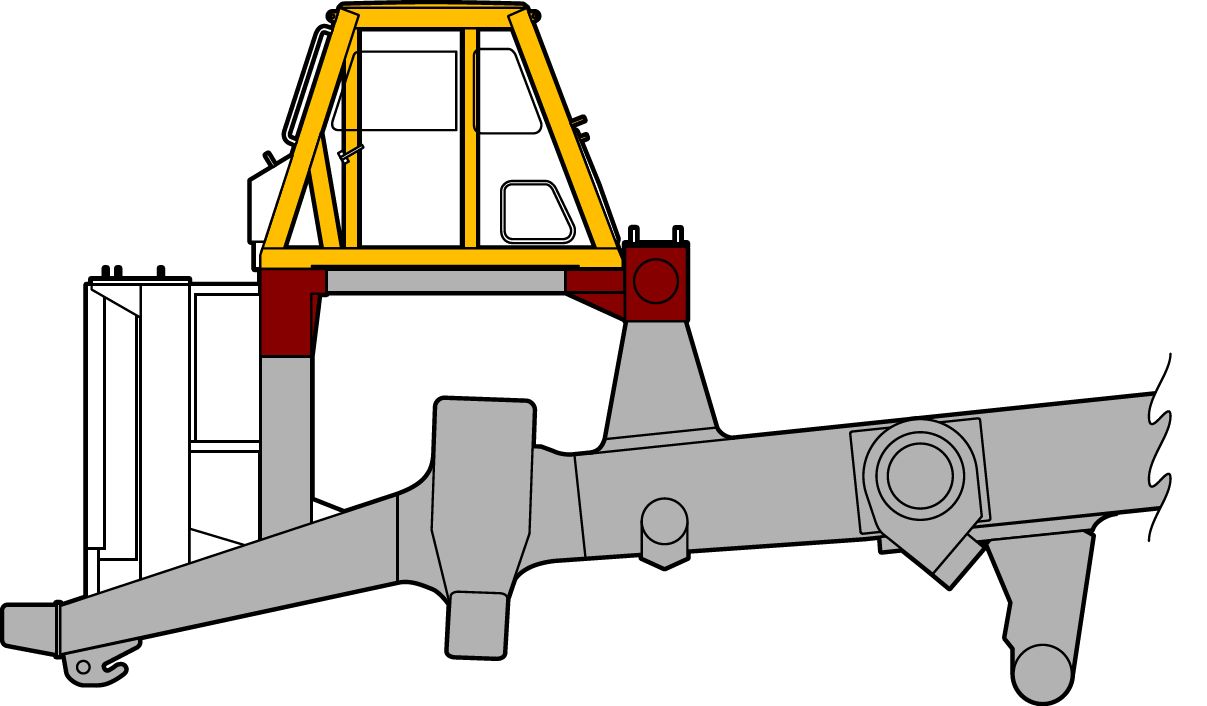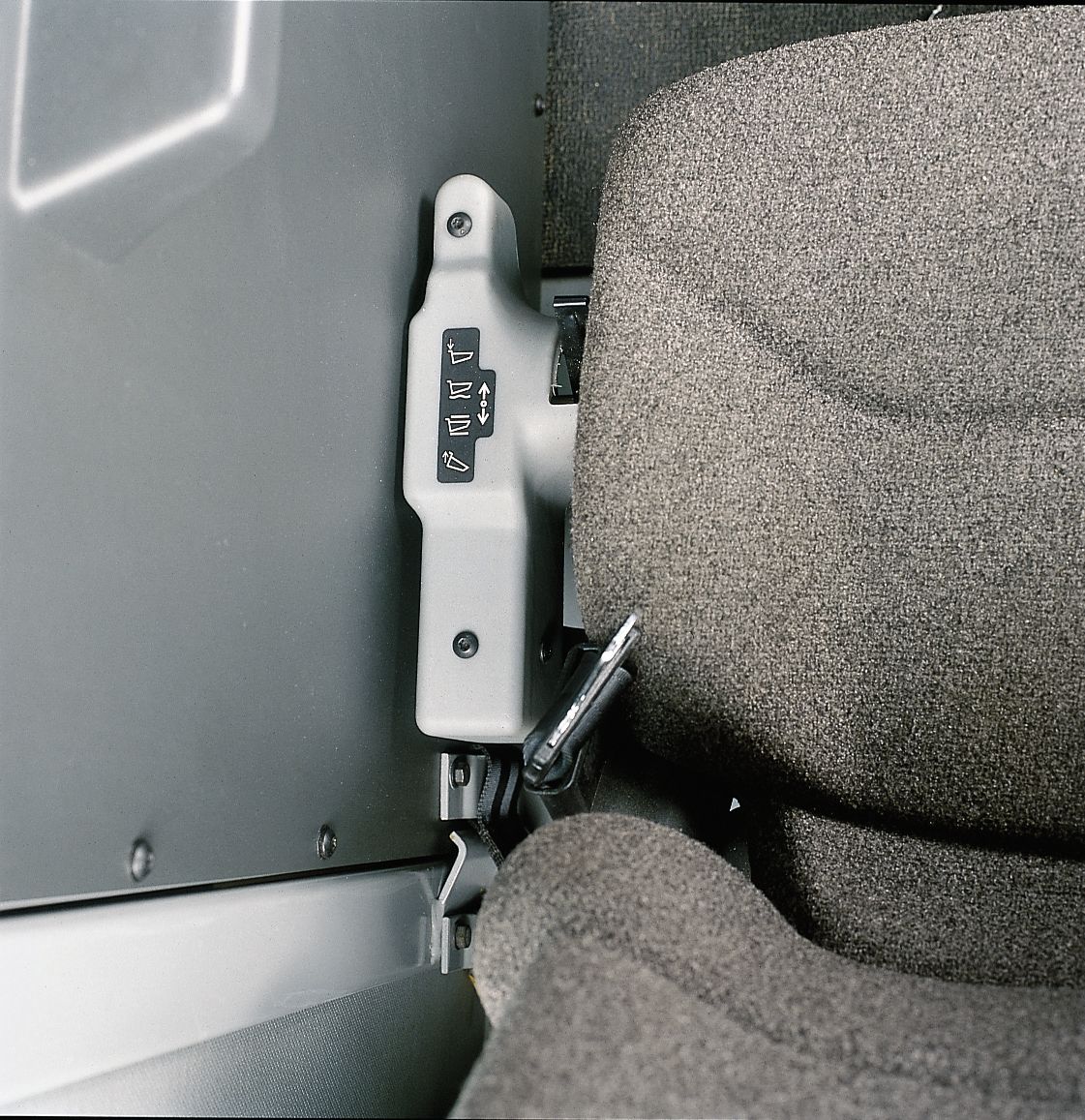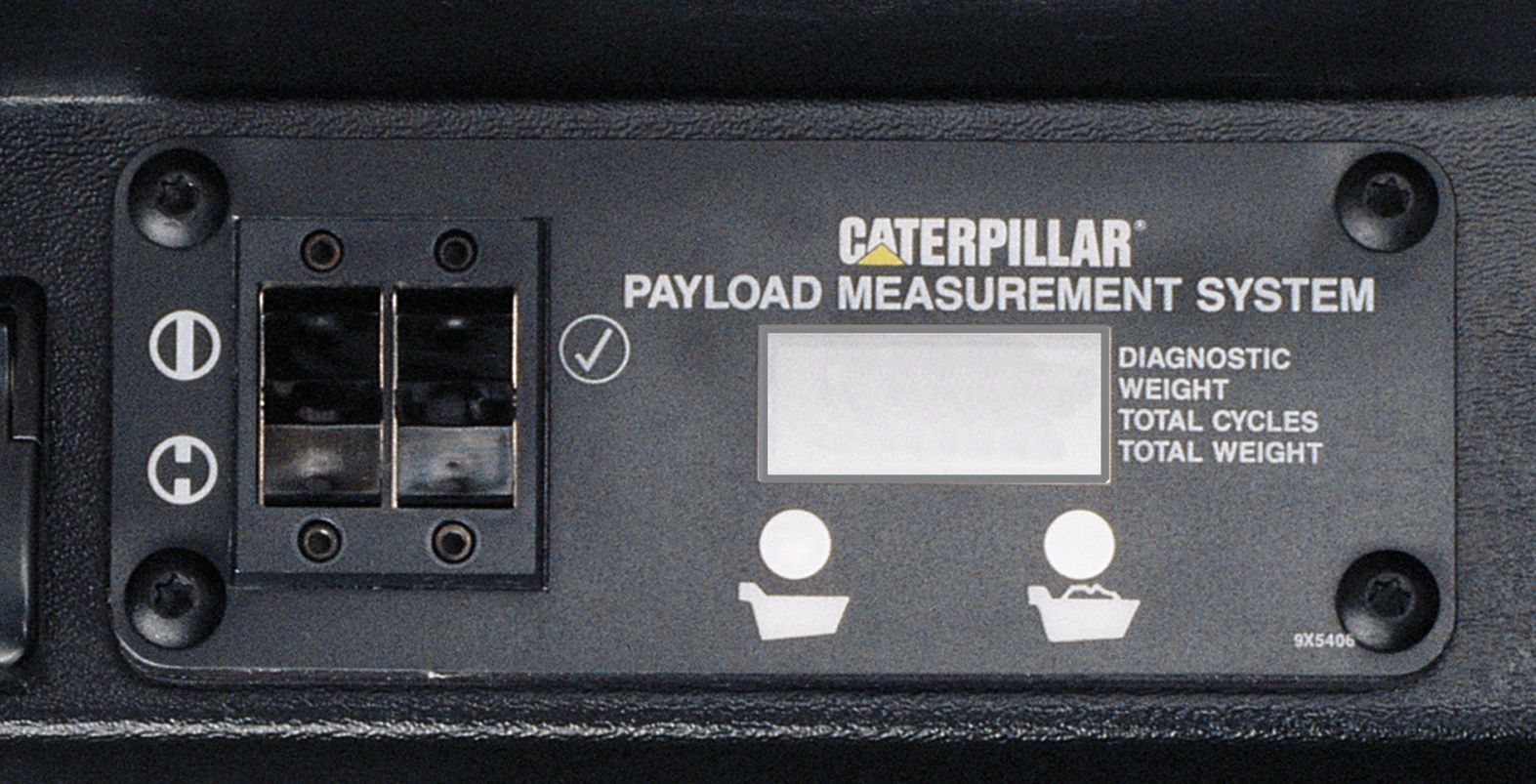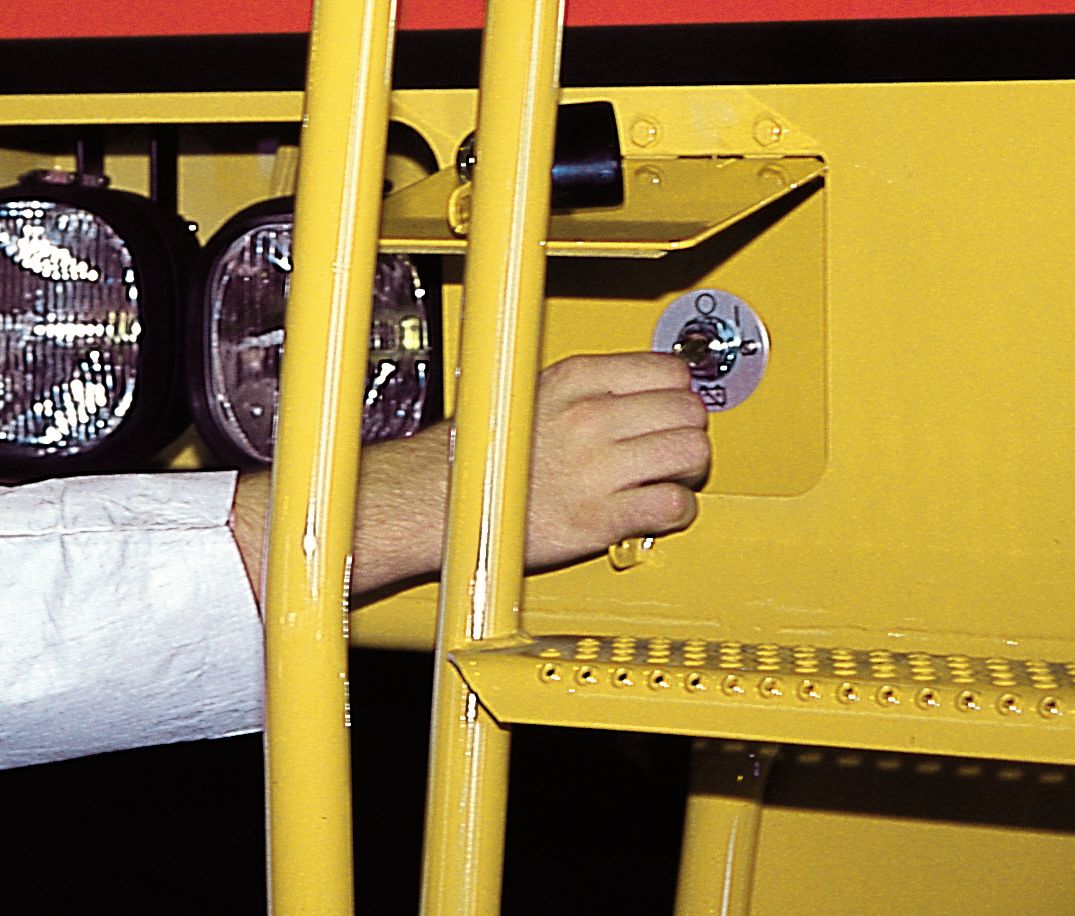Specifications
| Engine Model | Cat® 3412E |
| Rated Engine Speed | — |
| Gross Power - SAE J1995:2014 | — |
| Net Power - SAE J1349:2011 | — |
| Net Power - Cat | — |
| Flywheel Power | — |
| Net Power - ISO 9249 | — |
| Net Power - 80/1269/EEC | — |
| Number of Cylinders | 12 |
| Torque Rise | — |
| Bore | — |
| Stroke | — |
| Displacement | — |
| Nominal Payload Class (100%) | — |
| Top Speed - Loaded | — |
| Body Capacity - Struck | — |
| Maximum Capacity | — |
| Steer Angle | — |
| Body Capacity - SAE 2:1 | — |
| Forward - 1 | — |
| Forward - 2 | — |
| Forward - 3 | — |
| Forward - 4 | — |
| Forward - 5 | — |
| Forward - 6 | — |
| Forward - 7 | — |
| Reverse | — |
| Differential Ratio | 3.64:1 |
| Planetary Ratio | 4.80:1 |
| Total Reduction Ratio | 17.48:1 |
| Brake Surface - Front | — |
| Brake Surface - Rear | — |
| Brake Standards | ISO 3450:1996 |
| Pump Flow - High Idle | — |
| Relief Valve Setting - Raise | — |
| Relief Valve Setting - Lower | — |
| Body Raise Time - High Idle | — |
| Body Lower Time - Float | — |
| Struck | — |
| Heaped 2:1 (SAE) | — |
| Struck | — |
| Heaped 2:1 (SAE) | — |
| Front Axle - Empty | — |
| Front Axle - Loaded | — |
| Rear Axle - Empty | — |
| Rear Axle - Loaded | — |
| Effective Cylinder Stroke - Front | — |
| Effective Cylinder Stroke - Rear | — |
| Rear axle - Oscillation | — |
| Body | — |
| Body | — |
| Fuel Tank | — |
| Cooling System | — |
| Differential - Final Drives | — |
| Steering Tank | — |
| Steering System - Including Tank | — |
| Torque Converter - Brake - Hoist Hydraulic Tank | — |
| Brake Hoist System - Includes Tank | — |
| Torque Converter - Transmission System - Including Sump | — |
| Standard Tire | Standard: 24.00-R35 (E4) |
| ROPS/FOPS Standards | Meets SAE J1040 MAY94 and ISO 3471:1994 |
| Sound Standards | Meets SAE J88 APR95 |
| Steering Standards | Meets SAE J1511 FEB94 and ISO 5010:1992 |
| Steer Angle | — |
| Turning Circle - Clearance Diameter | — |
| Height - Top of ROPS | — |
| Overall Body Length | — |
| Inside Body Length | — |
| Overall Length | — |
| Wheel Base | — |
| Rear Axle - Tail | — |
| Ground Clearance | — |
| Dump Clearance | — |
| Loading Height - Empty | — |
| Inside Body Depth - Maximum | — |
| Overall Height - Body Raised | — |
| Operating Width | — |
| Centerline Front Tire Width | — |
| Engine Guard Clearance | — |
| Overall Canopy Width | — |
| Inside Body Width | — |
| Front Canopy Height | — |
| Rear Axle - Clearance | — |
| Centerline of Rear Dual Tire Width | — |
| Overall Tire Width | — |
Benefits & Features
Power Train - Engine
Cat 3412E Diesel Engine
The four-stroke design uses long power strokes for more complete fuel combustion and optimum efficiency. High displacement and a low speed rating can help extend engine life.
Torque Rise
The 33 percent torque rise provides high lugging force during acceleration and less down-shifting on grade or in rough underfoot conditions. The torque rise effectively matches the transmission shift points to provide maximum efficiency and faster cycle times.
Engine
1) Valve Rotators 2) Turbocharger 3) Stellite-Faced Valves 4) Steel-Backed, Copper-Bonded Bearings 5) Oil Cooler 6) Forged Crankshaft 7) Aftercooler 8) Adjustment-Free, Fuel Injection Pumps 9) Hydraulic Injectors 10) Forged Steel Pistons 11) Full-length, Water-Cooled Cylinder Liners
Engine Features
- Contributing to the 3412E power and reliability are:
- High pressure injection
- Full electronic control
- One-piece forged steel pistons with three rings cooled by oil spray
- Copper-bonded crankshaft bearings
- Hardened crankshaft journals
- Dry-type, radial seal air cleaners with primary and secondary elements and precleaner
- Direct-electric, 24-volt starting system with 50-amp alternator and two 172-amp-hour, low maintenance, high output, 12-volt batteries
Hydraulic Electronic Unit Injector (HEUI™)
The HEUI system is a proven high-pressure, direct injection fuel system. This system electronically monitors operator and machine inputs to optimize engine performance. The HEUI system is unique in its ability to independently control injection pressure over the entire engine operating range. This allows complete control over injection timing, duration, performance and efficiency. Rate shaping technology modifies the heat release characteristics of the combustion process for significant decreases in sound and emission levels. Exhaust smoke is significantly reduced through precise, electronic control of fueling limits and injection timing of the HEUI.
Electronic Control Module (ECM)
The ECM monitors key functions and logs critical indicators. The Electronic Technician can access this diagnostic information for easier maintenance and repair.
Power Train - Transmission
Transmission
The Cat seven-speed, power shift transmission, matched with the direct-injection 3412E diesel engine provide constant power over a wide range of operating speeds.
Transmission Features
- Include:
- Seven speeds forward, one reverse
- Torque converter driven in reverse
- First gear has both torque converter drive and direct drive
- Second through seventh gears are direct drive
- Single-lever shift control provides automatic shifting in all gears up to the one selected by the control lever
- Each shift is individually modulated for maximum smoothness
- Separate hydraulic circuit with cooler
- Electronic control has built-in diagnostics and fault memory, event memory and programmable features
- Control throttle shifting
- Economy shift mode
1) Lock-up Torque Converter
Combines the maximum rimpull and cushioned shifting of torque converter drive with the efficiency and performance of direct drive. • Lock-up clutch quickly releases and re-engages during shifts, maintaining power wind-up, improving transmission life and increasing operator comfort
2) Planetary Power Shift Transmission
- Utilizes a modulating pressure valve to regulate clutch pressure rise and fall to ease clutch engagement. This reduces shock loads on power train components. Features include:
- Large diameter clutches and robust planetary gears and bearings
- Patented rotating clutch pressure seals minimize drag losses and improve reliability
- 35 percent gear splits between all gears match Cat engine design for optimum use of engine power with minimized shifting and torque converter use
3) Final Drive
Final drive and differential torque multiplication of 17.48:1 further reduces stress on the drive train.
Axles
Full floating axles are shot-peened to relieve internal stresses and increase durability. Rolled splines also provide increased service life.
Wheel and Rims
Cast rear wheels and Cat center-mount rims are mounted using studs and nuts to minimize maintenance and maximize durability.
Transmission Chassis Controller (TCC)
- TCC uses electronically transferred engine rpm data to execute shifts at preset points for optimum performance and efficiency. This integration allows:
- Programmable top gear limit
- Control throttle shifting
- Directional shift management
- Neutral coast inhibitor
- Economy shift mode
Integration
The Caterpillar power train integration provides increased component life and operator comfort.
Engine/Power Train Integration
Integration
1) Electronic Technician 2) Cat Data Link System 3) Engine Control Module 4) Engine 5) Transmission Chassis Controller 6) Automatic Retarder Control, Traction Control System and Integrated Brake Controller 7) Caterpillar Electronic Monitoring System 8) Transmission 9) Oil-cooled Brakes
Cat Data Link
The Cat Data Link electronically integrates the machine's computer systems, which allows communications and provides the following benefits:
Elevated Idle Neutral Coast Inhibitor
Helps prevent the transmission from shifting to neutral at speeds above 6.5 km/h (4 mph).
Body-up Shift Inhibitor
Helps prevent the transmission from shifting above a pre-programmed gear without the body fully lowered.
Event Memory
- Records machine management data that can be accessed using the Electronic Technician. Recorded information includes:
- Shift histograms
- Operator-induced events
- Lock-up clutch counter
- Machine overspeed
- Transmission overspeed
Electronic Technician (ET)
- The electronic engine and transmission controls provide exhaustive diagnostic capability for service technicians. The ability to store both active and intermittent indicators will simplify problem diagnosis and reduce total repair time, resulting in improved mechanical availability and lower operating cost.
- ET accesses data stored in the engine and transmission controls via the Cat Data Link System.
- ET displays the status of all engine parameters including throttle position, timing and fuel flow.
- ET replaces 13 mechanical tools to perform functions like cylinder cutout checks, injector solenoid tests and timing calibration.
Caterpillar Electronic Monitoring System (CEMS)
CEMS allows the operator to view requested information and utilizes a three-category warning system to alert the operator to abnormal machine conditions.
Optional Attachments
Caterpillar offers optional attachments that integrate with the Cat Data Link System.
Oil Cooled, Rear Disc Brakes
Brakes
1) Parking/Secondary Piston 2) Service/Retarding Piston 3) Friction Discs 4) Steel Plates 5) Actuating Springs 6) Cooling Oil In 7) Cooling Oil Out
Multiple Disc Brakes
Caterpillar forced oil-cooled, multiple disc brakes are continuously cooled for exceptional, fade-resistant braking and retarding. The optional ARC and TCS utilize the oil-cooled rear brakes to enhance truck performance and increase productivity.
Oil-Cooled Disc Brakes
Are designed and built for reliable, adjustment-free operation providing superior performance and service life in comparison to shoe-type and dry-disc systems.
Oil Film
An oil film prevents direct contact between the discs. Absorbing the braking forces by shearing oil and carrying heat away, this design extends brake life.
Secondary Braking
Spring applied, hydraulically released, oil-cooled disc brakes are located on the rear axle. The front brakes will activate as part of the secondary system, even if switched out of service.
Parking Brakes
Spring-applied, hydraulically released parking brakes use wet disc brakes in the service system. A toggle switch activates the parking brake.
Pistons
A Caterpillar patented, two-piston design combines the service, secondary and parking brakes, along with retarding functions. The primary piston hydraulically actuates both service and retarding functions. The secondary piston is spring-applied and held in the disengaged position by hydraulic pressure. If hydraulic system pressure drops below a certain level, the spring-applied secondary piston automatically applies the brakes.
Integrated Braking Control (IBC)
Automatic Retarder Control (optional)
The ARC electronically controls braking on grade to maintain approximately 2,230 rpm (engine rpm is adjustable from 2,150-2,300 rpm in increments or 10 rpm). ARC is deactivated when the operator applies the brakes of throttle.
Engine Overspeed Protection
With the accelerator depressed and/or ARC turned off, ARC will automatically activate at 2,475 rpm to help avoid potentially destructive and often costly engine overspeeds.
ARC Benefits
- Include:
- Increased operating efficiency with faster downhill speeds. By maintaining consistently higher engine speeds, average truck speed will be higher than a manually controlled truck.
- Excellent controllability and reduced operator effort. Automatic brake modulation provides a smoother ride over manual modulation, allowing the operator to focus more on truck operation down the haul road.
- Improved component life, optimized system cooling capability and reduced torque fluctuations result from ARC's precision.
- Faster troubleshooting and diagnosis with self-diagnostic capability and the ability to communicate with ET through the Cat Data Link System.
- Operator awareness through electronic integration and CEMS, alerting the operator to overspeed conditions and critical machine functions.
Traction Control System (Optional)
Monitors wheel slip so if it exceeds the set limit, the oil-cooled disc brakes are automatically applied to slow the spinning wheel.
Operator Awareness
An on-dash indicator shows the operator that TCS is engaged.
Differential Action
Utilizes normal differential action to provide superior maneuvering in poor underfoot conditions. Also reduces tire scuffing as compared to positive lock differentials used on other systems.
Torque
TCS divides torque equally to reduce stress created on final drives and axles when torque is transferred to one side.
System Back-up
Should sensors fail, the normal differential action is still available to maintain control and steering.
Structures
Box-Section Design
The 775E frame uses a box-section design, incorporating 20 castings in high stress areas with deep penetrating and continuous wrap-around welding. Mild steel, which provides flexibility, durability and resistance to impact loads even in cold climates is used throughout.
Castings
Castings have large radii with internal reinforcing ribs to dissipate stress. Castings move welds to lower stress areas and provide two to three times the strength of equivalent sized fabricated structures.
Frame Features
- Include:
- Integral front bumper
- Front box beams for suspension cylinder and ROPS support
- Box-section rear crossmember for body and ROPS support with attachment points for maintenance platform and rear engine hood hinge support
- Castings provide additional strength in critical stress areas
- Mild steel plates (290 MPa [42,000 psi] minimum yield strength) and castings (241 MPa [35,000 psi] minimum yield strength) provide flexibility, durability and easy field maintenance.
Frame Serviceability
The box-section frame allows simple access to power train components. This open design reduces overall removal and installation time, lowering repair costs. Transmission access is excellent under the raised and pinned body. Repairs can be made without preheating in ambient temperatures above 16° C (60° F) using readily available welding supplies.
Rollover Protection Structure (ROPS)
The ROPS attaches securely to four castings welded into the frame.
Suspension System
Designed to dissipate haul road and loading impacts for extended frame life. Four independent, self-contained, oil pneumatic, variable-rebound, suspension cylinders absorb shocks. Rear cylinders allow axle oscillation and absorb bending and twisting stresses. Front cylinders, mounted to the frame, serve as steering kingpins, providing excellent maneuverability and reduced maintenance. Caster and camber are preset.
Truck Body Options
Design
775E bodies are designed to help you obtain the lowest cost-per-ton hauling solution in a variety of material conditions and densities.
Sidewall and Floor Junctions
Are joined by five-sided beams to resist impact loading and sustained hauling stresses.
Box-Section Beams
Offer increased durability in the floor, sidewalls, top rail, canopy corner and floor areas.
400 Brinell or HARDOX 400 Steel
Wear surfaces provide excellent wear resistance and are easily welded without preheating procedures. 400 Brinell steel is used in the dual slope construction body and the flat floor lined body. The flat floor quarry body is made from HARDOX 400 steel.
Two-Stage Hoist Cylinders
Provide fast dump cycle times of 9.5 seconds for raise and 12.5 seconds for lower.
Standard Body
Comes exhaust heated with options including a full-time muffler or exhaust diverter.
Custom Attachments
Including tail extensions, liner packages, sideboards and other custom designs are offered to help ensure rated payload and extend body life.
(1) Dual-Slope Construction Body
Offers the lowest cost-per-ton option in most construction applications.
Dual-Slope Body Performance
Efficient under most haul road conditions, but the dual-slope body's strength comes from higher levels of production in sites with rough haul roads and steeper grades.
Body Floor Construction
Uses an eight degree "V" bottom for increased load retention, a low center of gravity and reduced shock loading. It also aids in centering the load.
18 Degree Ducktail and 9 Degree Forward Body Slope
Retains the load on grades up to 15 percent and higher. This design also helps maintain proper load distribution.
(2) Flat Floor Quarry Body and Flat Floor Lined Body
- Offers uniform dumping into hoppers, crushers and feeders.
- Flat floor design improves wear characteristics of body tail
- 12 degree forward body floor slope
- Choice of 400 Brinell steel or HARDOX 400 steel
Operator Station
775E Operator Station
Rated highly by operators with everything needed for top performance located at the operator's fingertips.
1) Wraparound Dash Panel
Offers an easy line-of-sight arrangement, using LED backlit rocker switches.
2) Caterpillar Contour Series Air Suspension Seat
Standard and fully adjustable, including an adjustable right-hand armrest.
3) Tilt-Telescoping Steering Wheel
With ergonomic grip improves comfort and control. Low effort steering system and ergonomically designed retarder lever reduces operator fatigue. Also includes an enhanced turn signal lever with high beam actuator and electric windshield wiper controls.
4) Transmission Console
Has LED backlit gear numbers and ergonomic shift knob.
5) Visibility
Exceptional all-around viewing area reduces fatigue and improves productivity.
6) Integral, Sound-Suppressed ROPS/FOPS Cab
Is resiliently mounted providing a quiet, protected work environment. The cab is radio-ready with speakers, wiring harness, antenna and mounting bracket.
7) Front Brake Cut-Out Switch
Increases front brake component life.
8) Large Storage Compartment
0.10 m3 (3.5 ft3) of storage space is located under the trainer's seat.
9) Trainer's Seat
Includes back rest and retractable seat belt.
10) Caterpillar Electronic Monitoring System (CEMS)
- Provides critical data. The system features three separate displays:
- Four-gauge cluster with coolant temperature, oil temperature, brake air pressure, fuel level
- Tachometer, digital speedometer, actual gear indicator
- Message center module
11) Standard Heater and Optional Air Conditioner
Includes four-speed fan and nine vents.
12) Foot Pedals
Ergonomically designed for increased operator comfort.
13) Electric Power Window
For simplified operation.
14) Electrohydraulic Hoist Lever
Is fingertip actuated and provides low impact body-down snubbing.
15) Truck Production Management System (TPMS) (Optional)
- Provides payload and cycle time data.
- Cat developed technology utilizes strut pressure sensors and an on-board microprocessor to determine payload weight
- Accurate under normal loading to within ± five percent over a normal operating shift
- Delivers consistent accurate payloads and improves efficiency by minimizing overloading and underloading
Serviceability/Total Customer Support
Cat QuickEvac™ System
Is an exclusive Caterpillar on-board engine oil evacuation and prelubrication system.
Automated Engine Oil Change
A new, state-of-the-art, on-board system evacuates engine sump in less than two minutes and allows for purge of oil filters prior to removal, minimizing oil spills. It delivers new oil through primary filters for filtered protection and ensures new filters are correctly filled following routine oil change.
Contamination Control
Environmentally efficient, clean oil changes are ensured since engine sump is evacuated directly into PM trucks or waste containers with flush faced, quick disconnects for fast evacuation and fill. This eliminates handling of waste oil, minimizes chances of oil spillage and enhances Contamination Control efforts by ensuring complete filtration of new oil on engine refill.
Complete Engine Prelubrication
Provides engine oil pressure prior to engine cranking. Reduces engine dry start wear and risk of cold starts for increased protection of key components.
Improved Serviceability and Machine Availability
Reduces time to complete engine service (changing engine oil, oil filters, fuel filter, air cleaner) by as much as 30 to 50 percent. Improves the ability to schedule engine services at prescribed hours, allows for servicing during normal working hours and integrates easily with PM trucks to further reduce total cycle time of engine service.
Machine Platform
Provides access to air tanks, brake master cylinder and make-up tank; engine oil level; air filters; steering hydraulic tanks; and battery compartment.
Ground Level Battery Disconnect Switch
Facilitates safe, convenient servicing and maintenance.
On-Board Diagnostics
With CEMS, provides the machine operator with a three-category warning system and quick access to stored diagnostic data.
Off-Board Diagnostics
With ET, allows service technicians access to stored diagnostics data reducing downtime and lowering operating costs. ET stores engine parameter information such as timing, throttle position and fuel flow. Transmission data is available through ET via access to the Cat Data Link System.
Radial Seal Filters
Are easy to change, reducing air filter maintenance times.
Vertical, Spin-On Filters
Provide for simplified servicing.
Quick Coupler Pressure Taps
Located in all hydraulic systems provide clear, quick pressure checks. S·O·SSM oil analysis points make oil sampling quick, clean and easy.
Sealed Electrical Connectors
Lock out dust and moisture. Color-coded wiring is standard for the entire Cat product line.
Machine Management Service
- Cat dealers help manage equipment investments with:
- Vehicle systems analysis to help match the right machine to the job
- Preventative maintenance programs
- S·O·S oil analysis and technical analysis programs
- Repair option analysis
- Training for operators and mechanics
- TPMS data analysis
Parts Availability
The Caterpillar worldwide computer network locates parts instantly to minimize machine downtime.
Literature Support
Caterpillar manuals are easy to use and help provide the full value of an equipment investment.
Systems/Applications
Machine Configuration Options
Caterpillar offers a variety of machine configuration options to help meet customer needs.
Body Options
Include a full line of standard and custom designs based on specific customer preference, material density, loading tool and site conditions.
Tire Options
A full line of tire options, representing various manufacturers, is offered by Caterpillar to maximize performance and life for specific applications.
Attachments
- Give the customer options to tailor trucks for specific application requirements, including:
- Truck Production Management System
- Automatic Retarder Control
- Traction Control System
- Custom product offerings
- Muffler/exhaust diverter
System Approach
The Caterpillar system approach means increased efficiencies through common design. Haul trucks, loaders, excavators, tractors, engines for generator sets and pumps - all designed by Caterpillar - use common components, parts and design. Commonality reduces customer parts stock, improves parts availability, reduces training/maintenance and improves diagnostics. This system approach adds up to lower cost-per-ton. Dealer support is available to address customer needs regardless of the component.
Caterpillar Product Analysis Team (PAT)
Combined with Caterpillar software programs can assist customers with detailed, application evaluation.
Loader Match
- Designed to work as part of a system, the 775E is best matched to the following Caterpillar loaders:
- 988G - five to six pass/match
- 990 Series II - four pass/match
- 992G - three pass/match
- 5130B - three to four pass/match
Data not available.
Standard Equipment
- Brakes:
- Caliper disc (front)
- Oil-disc (rear)
- Parking
- Secondary
- Cab, ROPS:
- Caterpillar Contour Series air suspension seat
- Coat hook
- Insulated and sound-suppressed
- Radio ready
- Storage compartment
- Sun visor
- Tinted glass
- Gauges:
- Actual Gear Indicator
- Air pressure
- Brake oil temperature
- Coolant temperature
- Fuel gauge
- Hour meter, electric
- Odometer
- Speedometer
- Tachometer
- Lighting system:
- Back up light
- Dome/courtesy light
- Hazard and directional signals, LED
- Headlights, Halogen, with dimmer
- Stop/tail lights, LED
- Reservoirs (separate):
- Brake/hoist
- Steering
- Transmission/torque converter
- Transmission, electronically controlled automatic power shift
- with downshift/reverse shift inhibitor, neutralizer during dumping, neutral start switch, engine overspeed protection, directional shift management, programmable top gear, body-up shift limiter, economy shift mode and control throttle shifting
